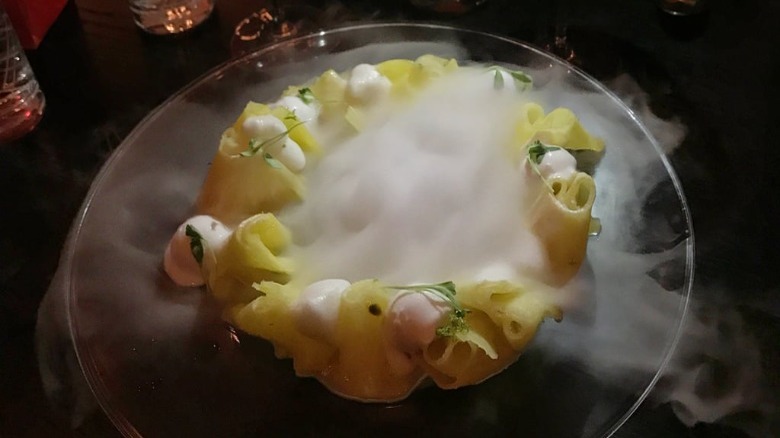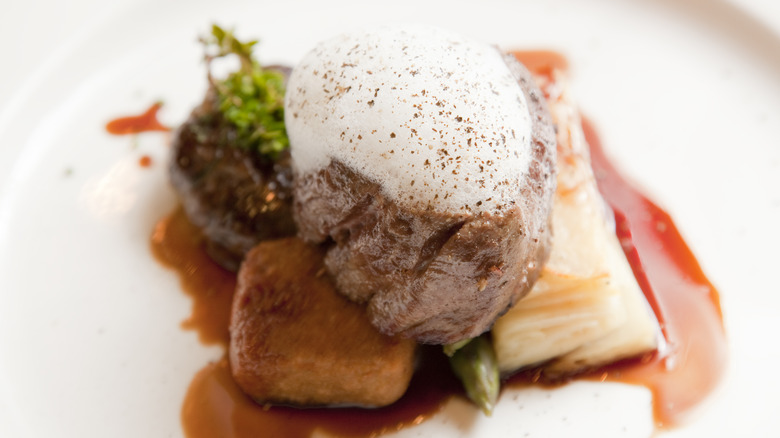Gordon Ramsay Can't Stand The Culinary Foam Trend (But Still Sells It At His Restaurant)
Part of Gordon Ramsay's appeal is his blatant honesty when it comes to judging foods. Whether it's on one of his television shows, or in a video posted to his TikTok, Ramsay often has something to say about the dishes he comes across. Naturally, during a 2018 interview with Pop Sugar, the celebrity chef was asked about his least favorite food trends, and he shared which items he'd seen enough of. At the top of his list of trends that need to go? Foams.
Culinary foams start with some kind of base — chicken stock, fruit juice, or a carrot puree, for example — combined with a binding agent. These typically include gelatin, agar, or lecithin. While this may seem like an inventive way to get an additional flavor profile into your dish through the creation of a fluffy, flavorful garnish, Ramsay evidently doesn't agree. However, that doesn't mean he has completely abstained from making the garnish himself.
One of Ramsay's restaurants served a foamy dessert
Despite Gordon Ramsay's vocal dislike of the foam trend, the Pop Sugar interviewer was quick to highlight that his Hell's Kitchen restaurant in Las Vegas did, at the time, serve up a dish with a foam topping. The pineapple carpaccio dessert combined coconut-flavored sorbet, coriander, passionfruit, and citrus foam. Once brought to the table, servers poured liquid nitrogen on the dish to create a smoky effect.
After Ramsay was reminded of his own menu item, he clarified, "That was a dessert foam." He then explained that he does not necessarily take issue with sweet foams, noting, "You can have a bit of fun with desserts." His disagreement with the trend pertains more to savory flavors. He noted that he once tried a bone marrow foam, which "was not very good."
Still, it seems Ramsay's dislike of the trend prevailed, and the pineapple carpaccio was eventually removed from the restaurant's menu.
This trend has been seen before
Though the trend may be seeing a resurgence in recent years, The New York Times reports that foams could commonly be found in dishes in restaurants back in the mid-1990s. Chef Ferran Adrià invented a white bean puree foam, which he served over a plate of sea urchin at El Bulli in Spain. Soon after his invention, foams began popping up in restaurants globally.
The creation of culinary foam was made easy by the iSi: a pressurized siphon that whips its liquid contents with nitrous oxide, creating a bubbly, fluffy component for any dish. Restaurants began adding the frothy food garnish to plenty of dishes, both sweet and savory.
However, the foam trend died out by the early 2000s, as food critics and chefs alike were reportedly tired of the trend. Fortunately for Ramsay, food trends come and go, so he may only have to avoid savory foams for a short while longer before they inevitably disappear.


